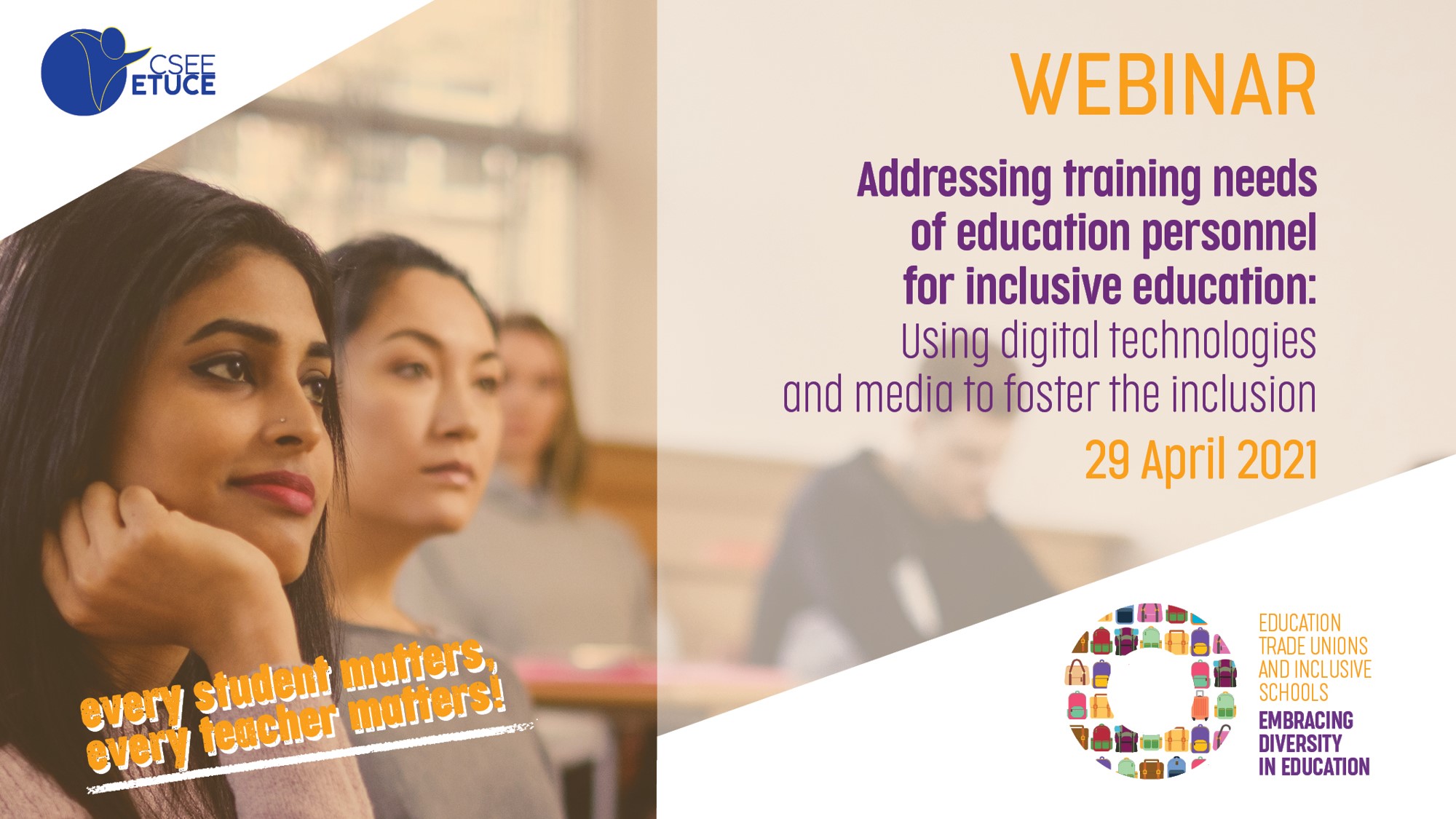ETUCE webinar: how to promote inclusive education through digital technologies and media?
Published:
What is the best way to counter digital exclusion? How to discuss social media with learners and use it as an inclusion tool? How can digital technologies be used to support teachers in addressing the necessity of migrant student or students with special needs? These and other issues were tackled at the ETUCE webinar “Using digital technologies and media to foster inclusion” on 29 April 2021. Organised in the framework of the ETUCE project on inclusive education, the webinar was the last one of the ETUCE series of webinars to address the training needs of education personnel for inclusive education.
91% of the respondents in ETUCE study ‘Embracing Diversity in Education’ reported that education staff need an urgent training on digital skills, digital pedagogy and IT tools to foster inclusion. Even if new technologies can be of great help in implementing inclusive education, the digital gap and the lack of access to technologies can worsen exclusion and inequalities. This reality has become more evident than ever during the emergency distant teaching and learning due to the COVID-19 pandemic, as this crisis has unveiled many systemic deficiencies and left the most disadvantaged groups out of education.
All the webinars can be watched in English, French or Russian here.
At the webinar, representatives from the European Commission (DG EAC) presented various EU level initiatives on supporting inclusive school education with digital tools, including EU Digital Education Plan and ‘SELFIE for teachers’, a forthcoming tool for self-reflection of teachers on digital competences to counter the digital divide (The new tool, already existing for schools, is expected to be launched by October 2021). Based on the whole-school approach, the ‘European toolkit for Schools’ proposes numerous resources for teachers, for instance, to support their initial and continuous professional development and wellbeing or to help them implementing inclusive education. At the webinar, the Commission also informed participants on an incoming public consultation on the ‘Pathways to school success’ within the new European Education Area (2025).
Several inspiring good practices were shared by education trade unions. FESP-UGT (Spain) presented ‘SomosMás’, a social educational project which aims at educating students on the values of inclusion and respect through social media. Responding to the teachers’ requests to develop new pedagogical methods addressing the specific necessities of students with special needs, FSLI (Romania) and other partners from Greece, Ireland and Italy developed the project ‘MAGIC-SENS’. Amongst other activities, the project includes a toolkit and online training for teachers to help them create innovative pedagogical methods for students with special needs. As a good practice at the national level, UEN (Norway) presented the national digitalisation strategies for basic education and higher education (2017-2021). Entailing the concept of ‘inclusive communities’, the strategies include adapted digital learning resources for students with special needs and migrant students, as well as individual learning arrangements in higher education.
To address the trade unions’ call to disseminate the good practices both at the European and trade union level, in the framework of the same project, ETUCE will soon publish an online Catalogue of Good Practices that will also be distributed to all member organisations. Besides, the ETUCE Online Database of Good Practice from education trade unions will be updated and renewed.
Read more:
- Presentation from the EU Commission
- National and trade union good practices from Romania – Spain – Norway
- learn more about the ETUCE project “Education Trade Unions and Inclusive Schools: Embracing Diversity in Education”
- Watch the 1st ETUCE webinar on “A whole-school approach for inclusive education
- Watch the 2nd ETUCE webinar on “Safe and healthy learning and working environment”